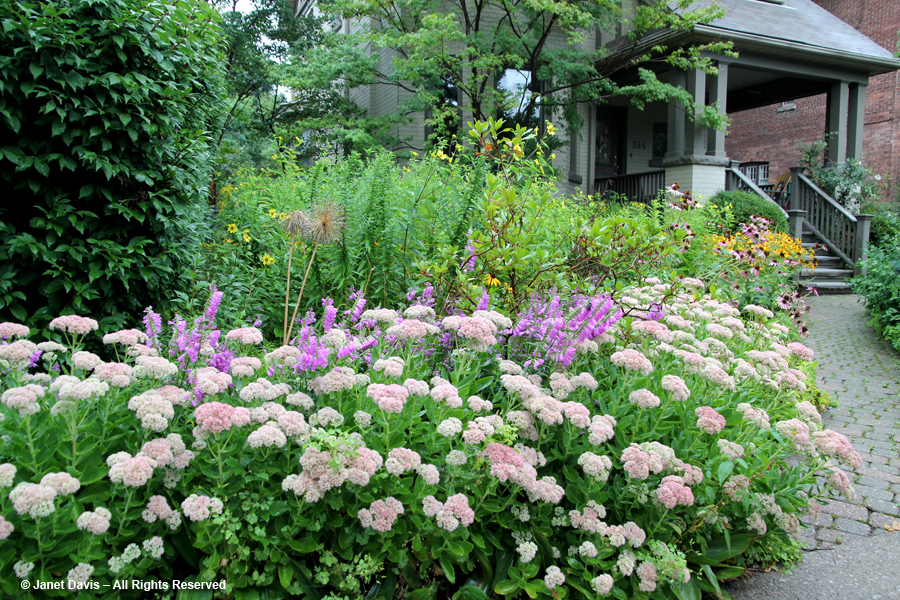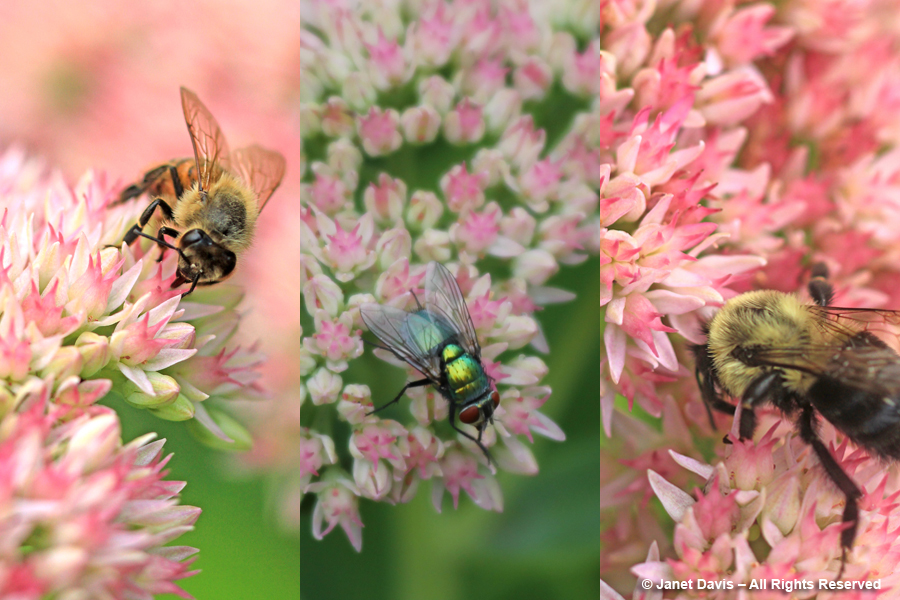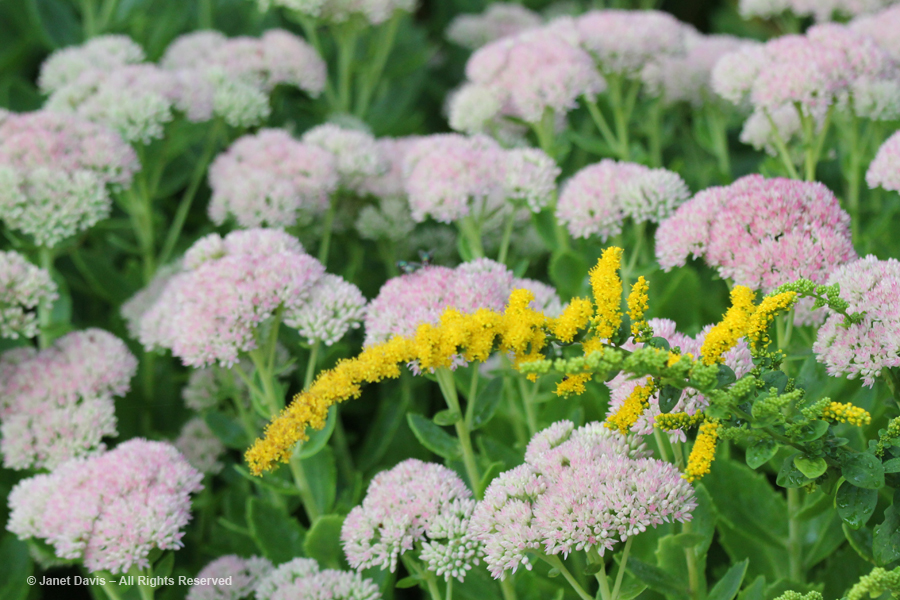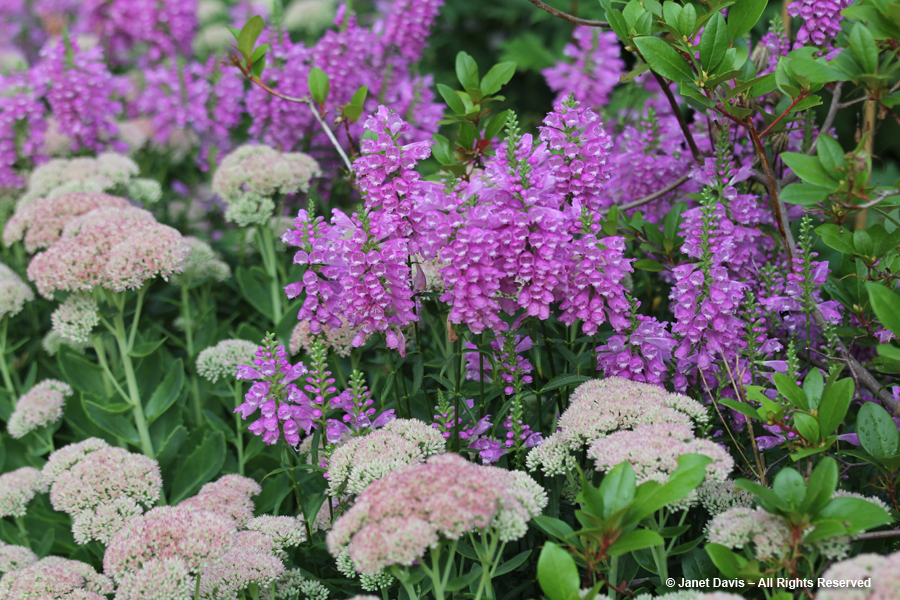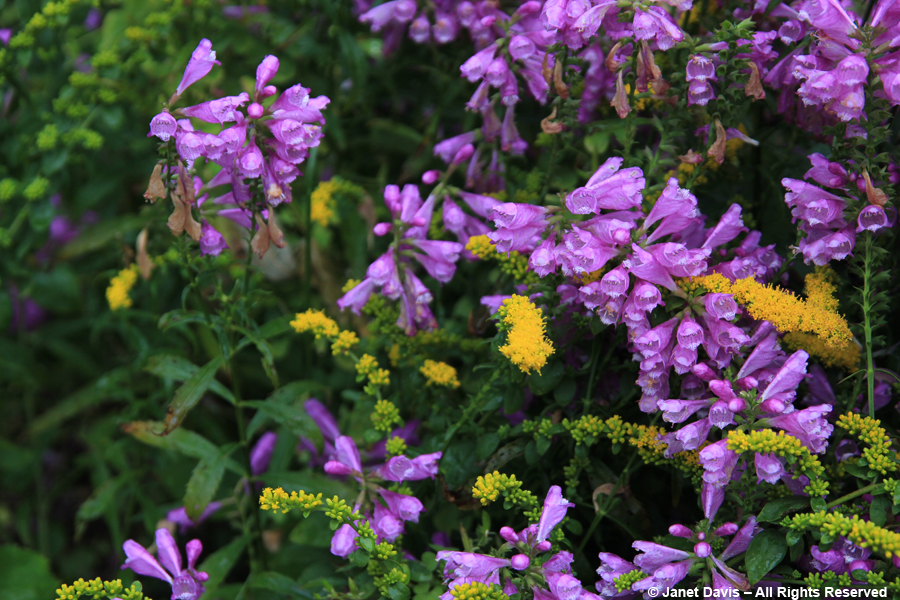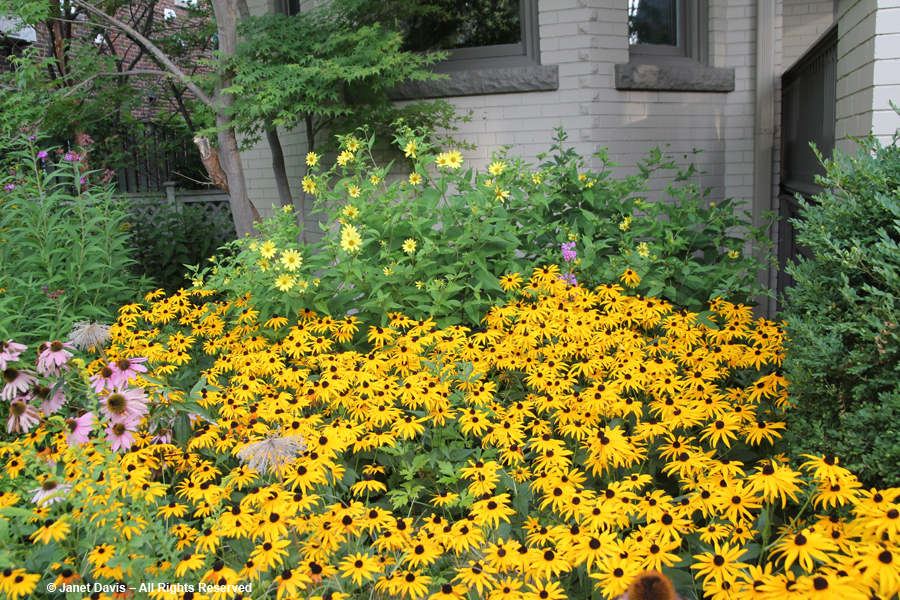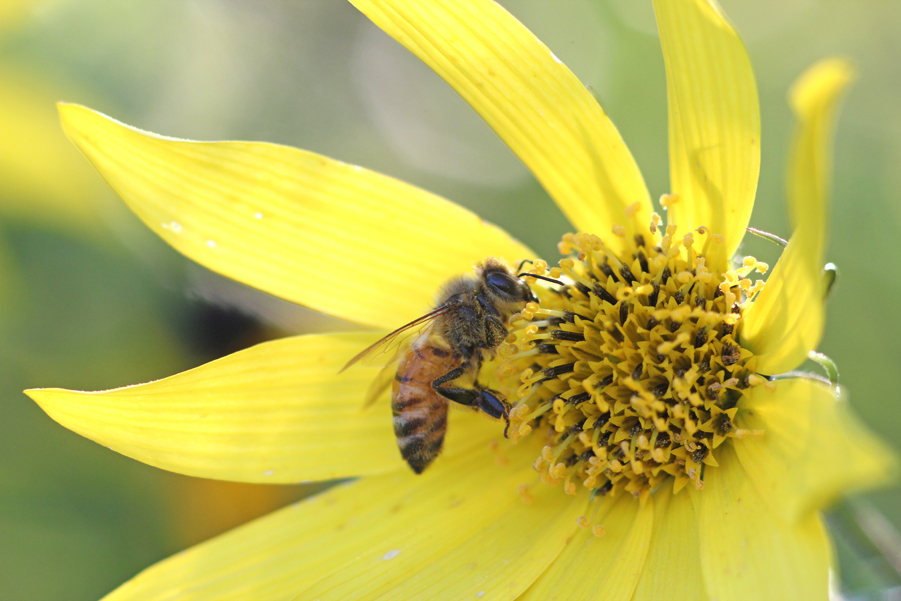The first week of September seems to be its very own kind of mellow. Everything about it: lazy cicadas droning; bees buzzing, seeking the last nectar of the season; kids heading back to school, all polished and excited; that tang of autumn in the air, even as Indian summer thunderstorms threaten the quiet morning. And that’s just today. In my slightly messy front garden not far from downtown Toronto, the September-blooming perennials are at their peak.
The mini-hedge of ‘Autumn Joy’ sedum (Hylotelephium telephium ‘Herbstfreude’) is opening its thousands of tiny pink flowers, attracting many types of nectar-seeking bees, flies and butterflies before turning that lovely russet-red that carries it into autumn.
There is a nicely-behaved goldenrod, Solidago sphacelata ‘Golden Fleece’ that weaves its way gracefully through other flowers. (And some uninvited cousins that will have to be ejected.)
I love the magenta flower spikes of obedient plant (Physostegia virginiana), In richer, moister soil, it might spread aggressively and the flower stems might grow tall and flop. But in this garden, lack of extra irrigation keeps it at a reasonable height and its spread is welcome.
The bees love it, too, especially carpenter bees whose strong tongues can pierce the corolla to access or “rob” the sweet nectar. Later, honey bees and bumble bees will use these pre-drilled holes to acquire their own nectar.
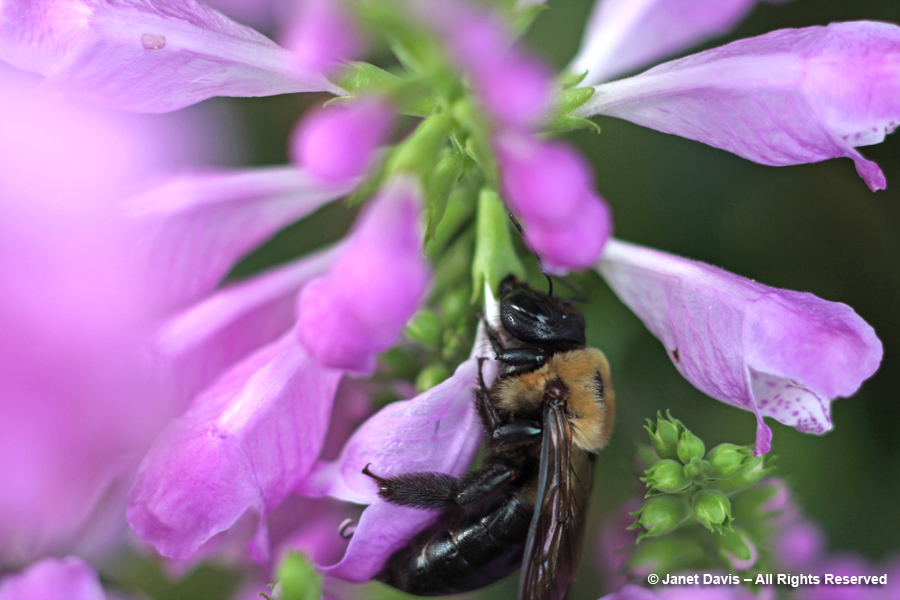
And it looks beautiful with the ‘Golden Fleece’ goldenrod as well.
The biggest perennial — and most problematic to me, for its eager spreading ways — is Helianthus ‘Lemon Queen’, shown here against the house behind a big drift of Rudbeckia fulgida ‘Goldsturm’, which has been generously blooming for several weeks. This robust, naturally-occurring hybrid of Helianthus pauciflorus var. subrhomboideus and Jerusalem artichoke, Helianthus tuberosus,is a wonderful plant for naturalistic gardens, provided you plan ahead for placement. At 6-feet (2m) plus, it needs to be back of border, not mid-prairie muscling out everything around it.
But the bees are awfully fond of it, too. So I may move it next spring — or I may not…..

